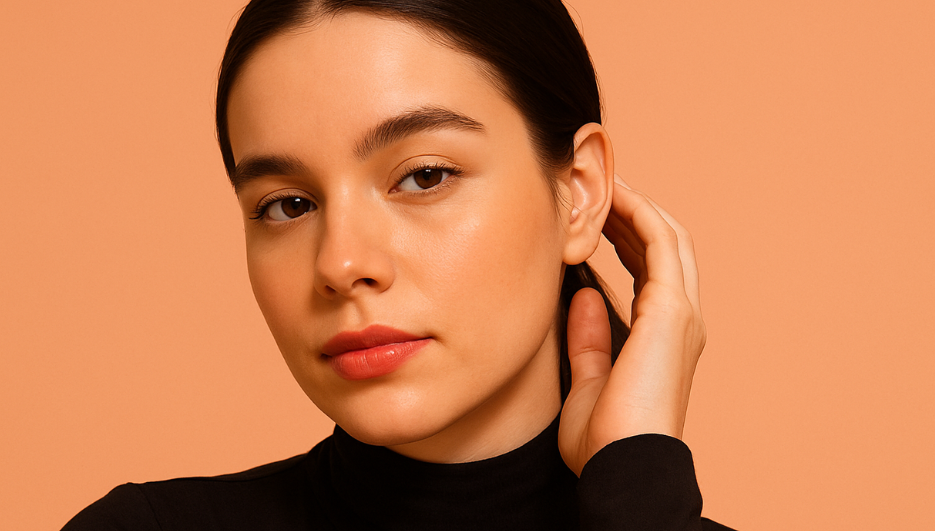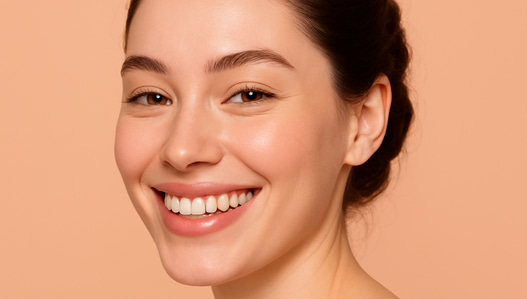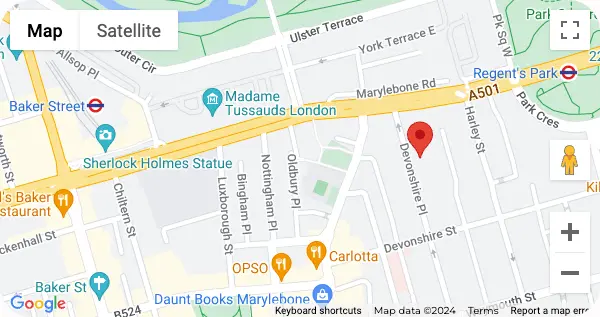Summary:
- Your moles’ itchiness can be both harmless and a sign that your skin has underlying conditions.
- Moles may not be malignant if the cause of their itchiness is friction, dryness, irritation, or an allergic reaction.
- If the itchiness of your mole comes with changes in its appearance, do not ignore it.
- Consult your UK provider if your moles suddenly change and become itchy.
- You can protect your mole with some easy steps, such as applying sunscreen on your skin, avoiding scratching them, and monitoring your moles.
- If you want peace of mind, you can consider having a biopsy or dermoscopy with the help of your doctor.
A mole: What is it?
Every person has moles. It’s a type of skin growth that usually appears on different parts of our bodies and has various shapes, sizes, colours, and textures. Some people already have them at birth. And for some, they just develop over the years.
Usually, moles are harmless. But sometimes, they will not just sit on our skin because it can be a sign that a person is developing a serious problem of skin cancer or melanoma. You need to know what is really happening, so you’d better check your mole condition, especially if it changes its appearance or if it’s bleeding. Immediate consultation with your doctor is what you need if you notice some of them.
Do Moles Normally Itch?
Moles sometimes can be itchy. Itchiness comes when your skin becomes dry or irritated for different reasons. But in some cases, there could be a sign of skin cancer (melanoma)
Here are some possible causes of itchiness:
- Skin care that contains harsh ingredients or products with fragrances, like body lotion or other chemicals that can bring irritation to your skin.
- First time using a particular product (like cologne, body spray, or shave cream)
- When you use products to make your skin look tan.
- Changes of laundry detergent or fabric softener brands.
- When your skin is exposed to cleaning products.
Why Do Moles Get Itchy?
Skin dryness, irritation, and friction
When you have skin that is dry or irritated, there’s a possibility that your mole becomes itchy. It may be because you are using harsh soaps or wearing tight clothing. And sometimes, when your jewellery or hair rubs against your skin. Don’t ever scratch them because it will make the irritation worse.
Allergic Reactions
Some products you are using can trigger an allergic response. It would be detergents, perfumes, or other skincare products that can create itchiness or inflammation in your skin. Only use mild or gentle products if you are sensitive.
Environmental Triggers
Temperatures can cause dryness or irritation to your skin. For some reason, places with humid, hot, or cold climates can make your moles itchy.
Skin Conditions
Skin problems that you have, like eczema, fungal infections, or dermatitis, are one of the reasons why you have itchy skin. Of course, they can affect your mole as well.
Spotting the Signs: When to Seek Help
Sometimes, it’s normal that your moles get itchy, especially when the skin around them is dry or irritated. But when it takes longer or doesn’t go away, it may not be a good sign. That’s why your dermatologist is encouraging you to know everything about your mole and when you should have them checked.
Effective & professional doctor-led Examining Itchy Moles at our central London clinic
Verified Before & After
Verified Before & After
Adding Itchy + ABCDE warning signs of melanoma
Your skin may not be in good condition if your mole starts to itch all of a sudden and lasts for a long time. You may also check if there are other warning signs using the ABCDE rule.
- A- Asymmetry: The sides of your mole are different from each other.
- B- Border: It has jagged edges, together with a blurry and irregular shape.
- C- Colour: Colours are not even and look different.
- D- Diameter: Larger than 6mm
- E- Evolving: There are visible changes in its appearance (size, shape, colour, or texture.
If you are experiencing some of these together with itchiness, you should consult your doctor to know exactly what’s going on.
New onset itching in a stable mole vs a chronic benign mole itching
A few times of itchiness on your normal mole may not be harmful because sometimes our skin experiences dryness, rubbing against our clothing, or irritation. But if those moles become itchy, tender, or start to scab, you need to have them checked by your dermatologist. It might be the sign of an increased immune activity or cellular growth under your skin.
If there’s an itchiness on your mole over the years, and that particular mole has not changed its appearance, you may be suffering skin conditions like eczema, dermatitis, or sensitivity. Let your doctor see them for proper treatment.
Other red flags
We never know what is really happening on your moles, whether it is just a late sign of irritation, which is good. But sometimes it may be a signal that your skin is developing melanoma. Aside from itchiness, your mole may have other signs that may need your doctor’s checkup immediately. Those signs that you need to look for are bleeding, crusting, or changing its shape. You should not ignore any one of those signs.
Itchy Moles on the Back: A Special Focus
Why back moles can go unnoticed
Moles on your back may be hard to check by yourself because you cannot see them clearly; we need help from others or our doctor to see what’s happening there. Sometimes it becomes irritated due to some reasons. For example, when there’s friction between your mole and your clothing, backpack, or strap of your bra. It will lead to itchiness and inflammation when it happens regularly.
When to get professional mole mapping or photography
Mole mapping or digital mole photography may be recommended by your doctor if your family has a history of skin cancer, and also if you have numerous moles on your body. They need them to check every detail of your mole, so it’s easy to recommend the next steps to take.
Can itchy Moles Be Harmless?
Common misconceptions
Some people think of an itchy mole as a sign of skin cancer, but that’s not always the case. Itching alone without other signs (use the ABCDE rule to check) does not usually indicate malignancy. It may be because of irritation coming from friction (from clothing or jewellery) or harsh products (skincare or detergents), which can be managed if you reduce friction and switch to gentle products.
Cases where itching is benign and simple self-care helps
Itchiness often goes away on its own with proper and gentle care. There are common reasons why your moles become itchy, some of them are dryness or irritation. If you experience them, do not scratch the area and relieve them by applying a fragrance-free moisturiser because it will help you a lot. It may also be because your clothing (waistband or bra strap) is rubbing against places where your mole is located. If that’s the case, you need to choose soft or loose fabric.
Pictures of Itchy Moles for References
You may check some photos of itchy moles from your clinic or your dermatologist so that you can be aware of what it looks like.
Gallery of benign vs atypical appearances
What you can see from the gallery:
Benign: The moles that are benign have smooth appearance that are round or oval in shape and its colour is even. It does not change its appearance.
Atypical: These moles have uneven shape, has different colour, with irregular or jagged edges. It may grow bigger and can be itchy or crusty.
Home Remedies and Soothing Self-care
If you have itchy moles but don’t have any other signs, don’t worry too much because they can be managed easily at home. Yes, you heard it right. Harley Street Skin Clinic experts provide some recommendations that you mcan follow:
- Moisturised your skin: You can prevent skin dryness if you apply a fragrance-free moisturiser to your skin regularly.
- Avoid Scratching: If you do this, irritation can be worsened and damage the area. You can use a soothing cream to ease the itchiness you feel.
- Protect from the sun: Harmful UV rays can irritate your skin, so using an SPF 30 can help lessen the irritation.
- Use wise sun-related practices: Apply sunscreen every two hours when you are outdoors and keep yourself in the shaded area between 11:00 am to 3:00 pm. Don’t forget to use clothing with sleeves, hats, and sunglasses to add some protection.
If you follow these steps, it will not just prevent irritation, but it will also protect your skin.
Medical Treatments
If the itchiness of your moles takes longer to subside and comes with other signs, like changing their shape, colour, or texture, go to your doctor and have your moles checked.
Here’s what they might recommend:
- A close-up analysis of your skin may be performed.
- They may recommend a biopsy if they find your mole is suspicious, so they can determine if it’s malignant or not.
- Some doctors recommend that the moles be removed.
Although moles are usually harmless, once you see something wrong with it, go to your healthcare provider because it may need an assessment to help you prevent any serious problems that may occur in the future. Your moles should undergo a regular check-up for early detection and prevention.
Learning Objectives
After reading this guide, you can:
- Learn how you can see the difference between a harmless mole and a suspected one that should be checked by your doctor.
- Understand if simple care is enough to manage itchiness or when it’s time you see your dermatologist.
- Get to know what the safe and effective options are to treat your itching moles. How to relieve dryness or prevent irritation that causes itchiness and how to protect your skin health.
FAQS
- What’s the reason for the sudden itchiness on my mole?
When our skin is dry and irritated, the mole that sits them can become itchy. Usually, it is caused by some skincare products or detergents. That’s why you need to use products that are gentle to your skin.
- Are itchy moles harmless?
It depends on your mole condition. But most of the time, it can be harmless if no changes are happening on your mole.
- When is an itchy mole a sign of melanoma?
If, aside from itchiness, it is also showing symptoms from the ABCDE rule, that could be a sign of melanoma that should be checked by your doctor.
- Should I worry about an itchy mole on my back?
Itchiness alone should not be a concern. It may sometimes be because of friction from your backpack or bra strap. Always check for other signs, and for your peace of mind, consult your doctor.
- How can I relieve itching on a mole at home?
Use a gentle moisturiser to avoid dryness. You may try to wear some loose clothing to reduce friction. Also, wear sunscreen and drink lots of water, which can be helpful in many ways.
- When should I consult my dermatologist for an itchy mole?
Itchiness that stays longer or sudden changes in your mole may need a doctor’s assessment.
Reserve a mole appointment
One of our experts will be more than happy to answer any questions you have.
Book AppointmentD Scott
★★★★★
I had a white mole removed by Mr Tee and it was a very easy and pleasant experience from start to finish - look forward to seeing the result!
21st May 2025
Hayley Dixon
★★★★★
Great pain free experience for a mole removal - would recommend
2nd July 2025
Nafalya Francis
★★★★★
I had a fantastic experience with dr Omar. His explanation into mole removal really put me at ease to go ahead with the procedure! I would recommend this clinic
16th April 2025







